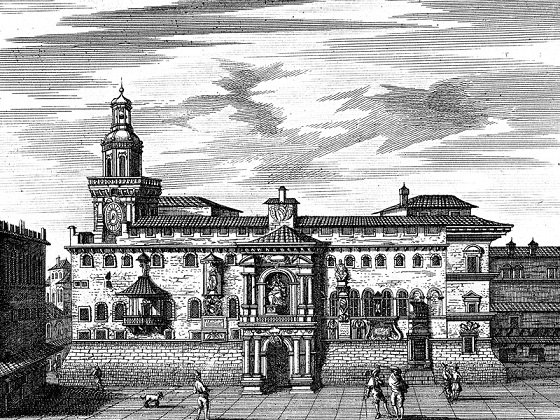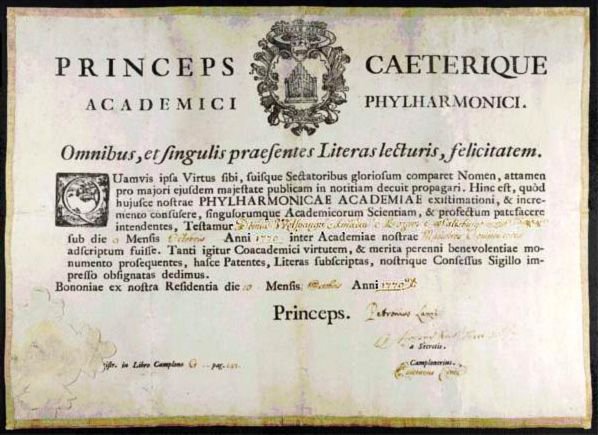During the eighteenth century, a leading cultural, intellectual, commercial and government centre within the administration of the Papal States. Musical life centered in large part on the chapels found in most of the churches and monasteries, chief among them S Petronio; other important music establishments were based at S Pietro and S Maria dei Servi. Several academies, including the Accademia Filarmonica, founded in 1666, were important in the musical life of the city as were the Teatro Fromagliari (opened in 1636 and in the later eighteenth century also known as the Teatro Zagnoni), where the repertory included both opere buffe and opere serie, and the Teatro Comunale, the building of which was completed in 1757 although it did not open until 1763.

Governor's Palace, Bologna, c1710 (engraving)
- Mozart Relevance
-
Mozart and his father were in Bologna from 24-29 March 1770 and from 20 July to about 13 October 1770. During his first stay in Bologna, Mozart visited the theorist Padre Giovanni Battista Martini and the soprano Carlo Broschi ('Farinelli'), and performed for Field Marshall Giovanni Luca Pallavicini-Centuroni. During his second visit, Mozart composed the opera Mitridate, re di Ponto K87, and on 10 October was made a member of the prestigious Accademia filarmonica, Bologna, for which he composed, as an admission test, the antiphon Quaerite primum regnum Dei K86.

Mozart's diploma from the Accademia filarmonica, Bologna.
- Location
- Papal States
- Date (Mozart)
- 1770-03-24/29 and 1770-07-20-1770-10-13
- Location (Mozart)
- Bologna
- Bibliographic Reference
- Bignami, Cronologia di tutti gli spettacoli rappresentati nel gran Teatro comunale di Bologna dalla solenne sua apertura 14 maggio 1763 a tutto l’autunno del 1880; Mioli, ‘La scuola di canto bolognese nel Settecento’; Verti, Il Teatro Comunale di Bologna; Verdi, Mozart a Bologna: I luoghi, I personaggi e l’essame all’Accademia Filarmonica; Basso, I Mozart in Italia, 375-380